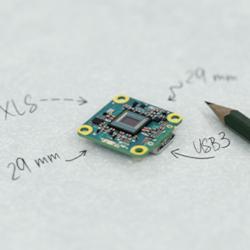3 skills tomorrow's farmer will need
 Mike Wilson for Farm Futures: Imagine this day: Just before you retire for the evening, you head to the office and fire up your laptop. You push a series of buttons that actives an autonomous set of vehicles in field no. 47, a half mile down the road. A cab-less harvester wakes up and starts chewing through a field of corn. As it moves it ‘talks’ to a self-propelled grain cart, which begins transferring loads of grain back and forth between the combine and nearby semi-truck. Driven by GPS, no lights are needed. No humans, either. Passersby hear the gently hum of engines but see little else.
Mike Wilson for Farm Futures: Imagine this day: Just before you retire for the evening, you head to the office and fire up your laptop. You push a series of buttons that actives an autonomous set of vehicles in field no. 47, a half mile down the road. A cab-less harvester wakes up and starts chewing through a field of corn. As it moves it ‘talks’ to a self-propelled grain cart, which begins transferring loads of grain back and forth between the combine and nearby semi-truck. Driven by GPS, no lights are needed. No humans, either. Passersby hear the gently hum of engines but see little else.
The farmer puts on his virtual reality goggles and views the scene from a nearby hovering drone. Satisfied all is well, he goes to bed. The field will be finished by morning. The self-driven truck will be waiting for him at the grain complex.
When will it happen? Five years, ten? The technology already exists.
Autonomous vehicles will be the next disruptor in ag, but by no means the last. Sensor technology will allow smart sprayers to identify and kill only weeds, saving money and the environment. Drones will identify pest problems and drop loads of beneficial insects to manage infestations. We’re already seeing a soil health revolution as farmers begin to realize how no-till, cover crops and better biology can reduce costs and weather-proof their lands. Full Article:
Comments (0)
This post does not have any comments. Be the first to leave a comment below.
Featured Product


